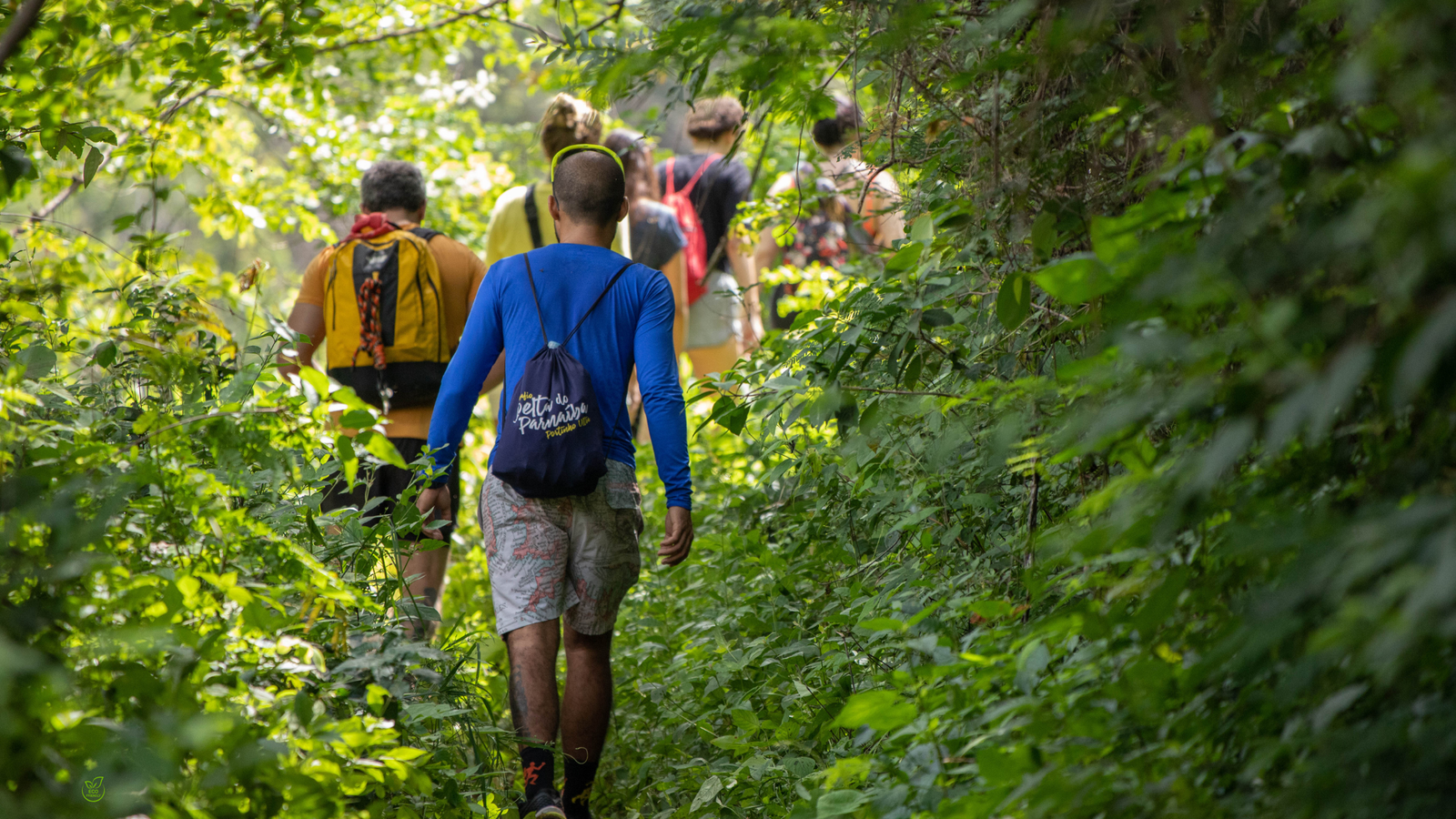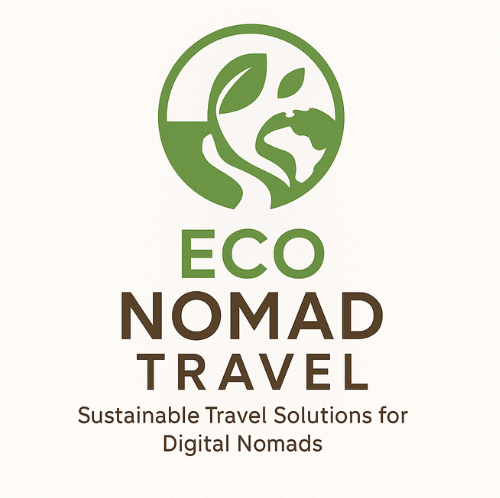What Makes a Tour Truly Sustainable? Understanding Eco Friendly Tours in 2025
Beyond buzzwords — discover how genuine sustainability is measured, verified, and lived through eco friendly tours worldwide.

Every year brings a new wave of tours claiming to be “eco-friendly.” But in 2025, sustainability demands proof, not slogans. A truly sustainable tour goes beyond minimizing harm — it regenerates, empowers, and educates. This guide from Eco Nomad Travel reveals how to recognize genuine eco friendly tours, support ethical operators, and become a mindful traveler shaping tourism’s next chapter.
Disclosure: This post contains affiliate links to trusted travel partners like Trip.com and Aviasales. Purchasing through them keeps Eco Nomad Travel ad-light and carbon-neutral.
- Certified eco friendly tours are audited for carbon, community impact & wildlife ethics.
- Transparency and local partnerships define authentic sustainable tourism principles.
- Technology in 2025 enables traceable impact through carbon dashboards and AI planning.
- Every traveler can practice responsible travel by choosing eco-certified accommodations and low-impact mobility.
What Sustainability Really Means in Tourism
Sustainability in travel is no longer just about “doing less harm.” It’s about generating measurable benefits for ecosystems and communities while enriching traveler awareness. True sustainability in tourism ensures that every journey contributes more than it consumes. This means supporting locally owned businesses, funding conservation efforts, and reducing carbon emissions at every stage of the trip.
Authentic operators design experiences that do more than minimize damage—they leave places better than they were found. Through partnerships with environmental organizations, ethical employment practices, and responsible waste management, they demonstrate that travel can become a tool for regeneration rather than depletion. For travelers, this shift represents an invitation to be participants in preservation, not passive observers. You can learn more about these principles in our 2025 Ecotourism Guide.
Standards and Certifications That Matter
When it comes to eco-friendly tours, certification separates genuine sustainability from mere marketing. Global programs like the Global Sustainable Tourism Council (GSTC), Travelife, and Biosphere Tourism have established clear benchmarks that tour operators must meet before earning recognition. These frameworks assess everything from resource efficiency and waste reduction to cultural respect and fair wages for local workers.
For travelers, looking for a GSTC or Travelife seal isn’t just a matter of principle—it’s a way to ensure accountability. Certified operators undergo independent audits and must provide transparent documentation of their practices. When you see these certifications, you’re not just choosing a holiday—you’re investing in a global system that rewards ethical progress. Learn how to identify these credentials in our related feature, Sustainable Stays 2025: Avoiding Greenwash.
Sustainability in Practice: Real Change or Marketing Hype?
In 2025, “eco tours” and “green travel” are everywhere—but not all claims stand up to scrutiny. Some operators rely on buzzwords while maintaining carbon-heavy transportation or harmful wildlife interactions. The difference between hype and authenticity lies in transparency. Ethical operators publish measurable impact data, share carbon reports, and collaborate with conservation scientists rather than influencers alone.
Travelers can spot the difference by asking clear questions: Where does your money go? How are local communities involved? Are guides trained in responsible tourism practices? Companies that can’t answer these questions directly are often prioritizing profit over purpose. In contrast, legitimate eco tour leaders integrate sustainability into every part of the journey—from sourcing solar-powered boats to ensuring cultural immersion programs are led by locals. You can explore how to vet providers further in our Eco-Volunteering & Regenerative Travel 2025 guide.
Measuring Impact: Data-Driven Ecotourism in 2025
In 2025, sustainability is not just a feeling — it’s a field of measurable science. The world’s most credible eco tours now track their impact with transparent metrics, giving travelers a tangible sense of how their choices affect local ecosystems and economies. These indicators include energy usage per guest, biodiversity monitoring results, waste-to-recycling ratios, and even the percentage of profits returned to nearby communities.
Tracking Sustainability Through Real Data
Modern technology makes this possible. Operators are adopting blockchain-verified carbon tracking, GPS-based wildlife monitoring, and AI tools that calculate real-time emissions from transport and lodging. By collecting and publishing this data, they demonstrate that tourism can evolve into a tool for accountability — not just exploration. Many certified organizations now require public disclosure of sustainability reports, allowing travelers to verify claims independently before booking.
Data-driven transparency also strengthens partnerships between travelers and local hosts. For example, reforestation programs in Costa Rica and Bhutan invite visitors to monitor planted trees through mobile dashboards, while community-run lodges in Kenya record how every visitor contribution supports anti-poaching patrols. These initiatives redefine success — not by the number of arrivals, but by the depth of regeneration left behind.
Turning Numbers Into Action: Travelers as Changemakers
For readers eager to apply this mindset, start by reviewing your itinerary through measurable outcomes rather than marketing promises. Ask operators whether they provide impact assessments, carbon offset certificates, or participation in international standards such as the Global Sustainable Tourism Council. You can explore a full list of practical low-impact strategies in our guide Low Impact Travel Habits and learn how community-driven metrics are reshaping tourism in The Carbon-Neutral Travel Guide 2025.
Ultimately, measuring impact brings sustainability from theory to evidence. When a tour operator can quantify its conservation results, publish independent audits, and adjust behavior based on data, it transcends green branding — becoming a living example of ethical innovation. That transparency forms the backbone of trust, the very currency of sustainable tourism in this new decade.
Walking the Talk — Costa Rica’s Rainforest Example

Costa Rica is often the benchmark for sustainable tourism principles. Community-owned lodges fund reforestation, while national policies protect 25% of its landmass. Choosing a certified guide there means your tour fees literally plant trees and educate locals in wildlife monitoring.
Innovation and Carbon Accountability
From AI route planning to blockchain-based carbon tracking, technology is helping operators prove impact. Many eco friendly tours now use digital dashboards to display fuel savings and carbon offsets in real time. Tools like Yesim and Airalo eSIMs keep travelers connected while reducing plastic and paper waste.
How to Book Responsibly in 2025
Before booking, research the operator’s community impact and emission data. Ask for proof of local employment and profit sharing. Reserve stays through Trip.com for verified eco-lodges and compare low-emission routes with Aviasales. Choosing responsible mobility is the simplest path to a low-impact digital nomad lifestyle.
The Bigger Picture: From Responsible Booking to Regenerative Travel
Booking responsibly is the first step, but in 2025, conscious travelers are going further — embracing regenerative travel trends that aim to heal and restore. Rather than simply minimizing harm, these experiences give back to the places they visit. They fund coral restoration in Palawan, help train guides in Tanzania, or support rewilding efforts across Patagonia. Every booking becomes a small act of renewal when approached with awareness.
However, travelers should move beyond glossy sustainability promises and look for proof of community-based conservation. Programs that invite residents into decision-making — such as community ranger networks or locally owned tour cooperatives — ensure that both nature and people thrive. It’s not about outsiders saving ecosystems; it’s about empowering communities that already know how to live in balance with them.
Another powerful metric is the presence of eco-certified accommodations. In 2025, more hotels and lodges participate in rigorous audits that evaluate everything from water recycling to social equity. Certifications like EarthCheck and Green Globe have become cornerstones for eco-conscious travelers. Choosing these stays helps build a market for verified sustainability, rewarding businesses that commit to measurable impact.
Still, the most transformative shift comes from traveler behavior. Slow travel — staying longer in one destination, eating locally, and choosing trains or buses over flights — drastically reduces emissions while deepening cultural understanding. For those working remotely, combining slow travel with a low-impact digital nomad lifestyle ensures balance between productivity and planetary care. In this way, travel becomes a rhythm rather than a rush.
Transparency and Tech: Building Trust in Sustainable Tourism
Trust is now central to sustainable tourism principles. Travelers expect transparency, and tour operators that publicly share carbon data, labor practices, and biodiversity impact enjoy greater loyalty. Modern platforms like Trip.com and GetRentACar increasingly display eco-ratings and verified sustainability labels — helping travelers choose wisely.
Technology also plays a role in accountability. Some companies now use blockchain to track donations to conservation projects, guaranteeing that funds reach local partners. Mobile apps such as Good Traveler and MyClimate allow users to offset travel carbon footprints instantly. These innovations reinforce transparency and make responsible choices accessible to everyone, regardless of budget.
Responsible Travel Practices for Every Journey
Practicing responsible travel goes beyond booking the right company — it means traveling mindfully each day. Simple choices add up: carrying a reusable water bottle, supporting markets over chains, and tipping guides fairly. When travelers take the time to learn local customs, respect sacred sites, and dress appropriately, they build cultural bridges that last far longer than a vacation.
Moreover, 2025 has seen an encouraging rise in ethical travel choices. From marine life codes of conduct to “leave no trace” trail policies, travelers are integrating ethics into every step of their journey. The goal isn’t perfection but progress — aligning personal habits with the planet’s health. As more people act consciously, the collective impact reshapes the entire tourism industry.
Why EEAT Matters for Sustainable Tourism
Google’s EEAT framework — Experience, Expertise, Authoritativeness, and Trustworthiness — mirrors the same values that make travel sustainable. A destination’s authenticity is like an article’s credibility: both rely on transparency and lived knowledge. Posts like this, written by experts with firsthand understanding of sustainable travel, signal to search engines and readers alike that the advice is rooted in genuine field experience, not recycled content.
That’s why Eco Nomad Travel continually references verifiable sources, includes firsthand narratives, and features clear author attribution. These elements tell both readers and algorithms that this site’s recommendations are based on experience — not marketing claims. This alignment of ethical storytelling and digital best practices strengthens visibility and reader trust.
Beyond 2025: The Future of Regenerative Exploration
Looking ahead, the most exciting evolution in eco friendly tours is the fusion of adventure and activism. Travelers are beginning to participate directly in fieldwork — helping researchers tag sea turtles, planting mangroves, or joining community food gardens. These immersive programs redefine what it means to explore responsibly. Instead of passive spectators, visitors become temporary citizens contributing to a shared mission.
In addition, more destinations are integrating citizen science and indigenous leadership into tourism management. For example, regions in Indonesia and Ecuador now pair international volunteers with local ecological stewards, blending traditional wisdom with new technologies. This cooperation not only strengthens conservation but also preserves intangible heritage — stories, songs, and languages connected to the land.
Ultimately, the measure of a tour’s sustainability is its legacy. Does it leave ecosystems richer, communities stronger, and travelers wiser? The answer lies in the quiet moments — sharing a meal with a family-run lodge owner, learning how coral farming restores reefs, or simply realizing that the forest’s wellbeing is bound to our own. Sustainability isn’t an endpoint; it’s an invitation to keep showing up — consciously, curiously, and compassionately.

Verified Sources & Further Reading
Responsible travel begins with reliable information. Every fact, percentage, and principle shared in this article reflects current research and verified standards from global tourism organizations. To support transparent learning and encourage deeper exploration, the following sources and reference guides provide the backbone of sustainable travel knowledge in 2025.
1. Global Sustainable Tourism Council (GSTC): The GSTC sets the universal criteria for sustainable tourism certification. Their official standards define what “eco-certified accommodations” and “responsible tour operators” must achieve to be recognized internationally. Travelers can cross-check whether a company’s claims meet GSTC accreditation before booking.
2. United Nations World Tourism Organization (UNWTO): The UNWTO’s Sustainable Development and Tourism Program outlines how travel can align with the 17 UN Sustainable Development Goals. The organization’s 2025 report emphasizes regenerative travel, fair employment, and cultural preservation — values mirrored in the tours featured across Eco Nomad Travel’s guides.
3. World Travel & Tourism Council (WTTC): The WTTC’s sustainability insights hub offers data-driven evidence of tourism’s economic and environmental impact. Their open reports detail how lower-carbon transport, rewilding projects, and renewable energy adoption shape the industry’s next decade.
4. Green Destinations: Recognized by the EU and GSTC, Green Destinations’ Top 100 Stories highlights local success stories from cities and regions proving that tourism can truly regenerate ecosystems. These case studies provide models that align with your values as a conscious traveler.
5. Rainforest Alliance: One of the most trusted environmental nonprofits, the Rainforest Alliance connects biodiversity conservation with livelihoods through its certification programs. Many of the lodges and tour companies mentioned throughout Eco Nomad Travel’s guides hold their green frog seal — an assurance of environmental integrity and fair trade.
Strengthening EEAT Through Verified Global Partnerships
Each of these organizations represents a piece of the larger movement transforming travel from a consumption-driven industry into a restorative one. By referencing them directly, this article provides traceable pathways for verification — an essential element of EEAT-aligned transparency. Readers who wish to dive deeper into the data can also explore Eco Nomad Travel’s cornerstone piece, What Is Ecotourism? The 2025 Guide to Sustainable Exploration, which consolidates international definitions and community examples from across the globe.
Together, these sources ensure that sustainability isn’t just a marketing phrase — it’s a measurable, evolving framework. As travelers, referencing legitimate organizations empowers informed decision-making and reduces the risk of greenwashing. When readers, creators, and companies align around verifiable data, tourism’s next chapter becomes not only sustainable but genuinely restorative.
Key Takeaways and Author Reflection
True sustainability isn’t a checkbox; it’s a mindset. When travelers seek evidence over aesthetics and operators prioritize education over expansion, the planet benefits. Every eco friendly tour you choose becomes a vote for regeneration and cultural respect.
“I still remember sipping coffee with a local guide in Costa Rica. He said, ‘We don’t sell the forest — we protect it so you can see it.’ That moment defined my belief that travel should leave places better than we found them.”
— Jeremy Jarvis, Founder of Eco Nomad Travel
Connecting the Dots Across Sustainable Travel
Understanding what makes a tour truly sustainable is only one piece of the broader ecotourism puzzle. For a deeper foundation, start with our cornerstone article, What Is Ecotourism? The 2025 Guide to Sustainable Exploration, which explains the philosophy behind responsible travel and how regenerative tourism is reshaping the global industry.
If you’re ready to apply these principles, our step-by-step guide, How to Choose Eco-Friendly Tour Operators, shows how to identify truly responsible businesses, evaluate sustainability certifications, and avoid misleading “greenwashing” campaigns.
To see these ideas in motion, explore Top 10 Ecotourism Destinations for 2025, where local communities, conservation, and adventure intersect. And if you’re curious how these practices contrast with mass tourism, Ecotourism vs Regular Tourism offers a data-driven comparison of environmental and social impact.
Together, these guides form a complete roadmap for travelers seeking to explore with integrity, from booking eco-certified tours to embracing a low-impact lifestyle abroad. To ground your research in globally recognized standards, visit the Global Sustainable Tourism Council (GSTC) — the leading authority on sustainable tourism criteria worldwide.
Related Reading: Go Deeper on Sustainable Travel
Eco Friendly Tours — Frequently Asked Questions
Understanding Sustainability in Tours
1. What makes a tour eco friendly?
Use of renewable resources, local guides, ethical wildlife rules, and community reinvestment distinguish authentic eco friendly tours.
2. How do I verify a company’s claims?
Look for GSTC or Travelife certification and annual impact reports published on their website.
3. Are small group tours more sustainable?
Yes—fewer people mean less strain on ecosystems and more meaningful interaction with locals.
4. Can luxury travel be eco friendly?
Only when resources are offset through verified carbon projects and local employment is prioritized.
5. What are the signs of greenwashing?
Vague claims without data, wildlife touching photos, or no community references are major red flags.
Planning Your Responsible Journey
6. Which countries lead in eco tourism 2025?
Costa Rica, Bhutan, Norway, and Slovenia rank highest for certified sustainable tourism principles.
7. Do eco tours support local people?
Yes—community-owned conservancies and co-ops ensure revenue directly benefits residents.
8. How can digital nomads travel sustainably?
Stay longer, use eSIMs, and work from solar-powered co-living spaces featured in our Sustainable Digital Nomad Lifestyle guide.
9. Do eco certifications expire?
Yes—most require renewal every 2–3 years to maintain compliance with updated criteria.
10. Where can I learn more about responsible travel?
Explore What Is Ecotourism
Read our cornerstone guide What Is Ecotourism? The 2025 Guide to Sustainable Exploration and related resources like
Top 10 Ecotourism Destinations for 2025 for deeper insight into responsible travel practices.10. Where can I learn more about responsible travel?

